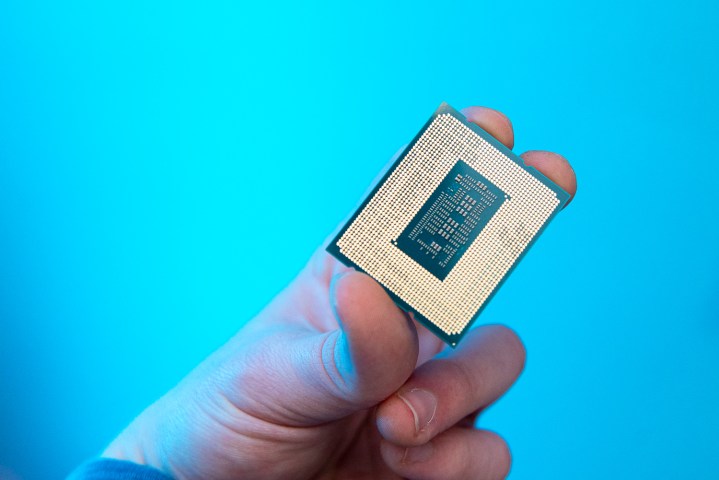Intel is in trouble. We’ve known there was a problem for months, but the true scope of the issue is coming into focus. Intel has finally said a microcode update that will solve the instability problem is on the way, but it won’t be here for several weeks. It’s not much of a resolution, either — I still have a lot of questions about Intel’s instability problem, and how it plans to address the issue going forward.
I’ve sent the list of questions below to Intel for a response, and in cases where Intel has responded, I’ll provide the exact quote. We’ve definitely seen some shifty communication from Intel regarding the instability issue up to this point, so I’ll fill in the gaps if there’s anywhere Intel wasn’t able to provide a solid answer.
How will this impact performance?

The most obvious question — and the question most people are asking — is if this microcode update will hurt performance. That assumption isn’t without basis. Early on in this fiasco, Intel pushed motherboard vendors to release the Intel Baseline Profile to get systems stable, and testing revealed that these power profiles could result in a performance loss of 9%, all the way up to over 20% in certain workloads. In some cases, such as Gigabyte motherboards, processors were literally knocked down a full performance tier.
This is such a big question because it’s by far the most consequential. If the processors are slower, that erodes the foundation that buying decisions were made on. Buyers were promised a certain level of performance, and if that performance drops under what are considered “stable” circumstances, buyers were sold a bill of goods.
It doesn’t really matter how minor the performance drop is, either. It brings up issues of false advertising and dissuading buyers, even if Intel was none the wiser about instability problems at the time of release.
Intel hasn’t responded to this question yet, and it likely won’t. The company is already on the hook for manufacturing errors and permanently damaged CPUs. In the event of a clear performance loss following the microcode update, the scale of the issues becomes much larger.
Will Intel offer refunds in the event of a performance loss?
Following up on a potential performance loss is how Intel will make it right with customers. Once again, Intel hasn’t answered this question yet. The company confirmed it won’t be issuing a formal recall, which leads me to believe it won’t honor refunds in the event the microcode update degrades performance.
We’ve already seen situations where Intel has denied returns for more serious issues due to manufacturing, which doesn’t give me hope that it will be gracious with refunds simply due to lost performance. This is extremely consequential for Intel’s CPUs moving forward, however. If there is a performance loss, and Intel doesn’t offer recourse for buyers, it will be near impossible to recommend any Intel CPUs in the future. Reviewers simply can’t trust the data they’re seeing.
Who needs to apply the microcode update?

According to Intel, any 13th-gen or 14th-gen CPUs with 65W or higher base power will need the microcode update. It’s interesting that Intel is reaching all the way down to the Core i5 with its microcode update, as the vast majority of processors we’ve see with issues are Core i9 models.
It really seems like Intel is trying to be safe more than anything. “Intel Core 13th and 14th Generation desktop processors with 65W or higher base power – including K/KF/KS and 65W non-K variants – could be affected by the elevated voltages issue. However, this does not mean the listed desktop processors are inevitably impacted by the issue,” is what the company told me. Regardless, it’s best to apply the update if your CPU falls within Intel’s window.
What is the date range for CPUs affected by oxidation?
If there’s one area where Intel is being dodgey, it’s oxidation. Gamers Nexus originally reported that early 13th-gen and 14th-gen CPUs were impacted by a manufacturing error causing oxidation in the interconnects within the silicon wafer. Intel has since acknowledged the problem, saying that it was addressed in 2023, but it’s been surprisingly tight-lipped about the issue otherwise.
For starters, the oxidation issue was only acknowledged on Reddit, not on the statement posted to Intel’s website. Despite clarifying that the issue was resolved in 2023, Intel hasn’t provided a potential range of impacted CPUs. And it definitely could.
On every Intel processor, you’ll see a partial serial number, showing the last three to five digits of the serial number, as well as the batch number, which is called the FPO. These two details can narrow down the specific processor without a full serial number. It wouldn’t be difficult for Intel to provide a range so customers know if they have a defective processor or not. Details like the manufacturing date are tracked, and Intel could tie that to whatever it knows about the manufacturing error.
Will Intel honor all returns for CPUs impacted by oxidation?
And this is probably why Intel hasn’t provided a date range on CPUs impacted by oxidation. The company has reportedly denied some return requests for defective CPUs, even after knowing about the oxidation error. Depending on the scale of this manufacturing slipup — Intel says it only affected a “small number” of processors — it could represent a lot of lost money if Intel has to replace every defective CPU it sold.
Considering this is a manufacturing issue, and one that Intel has known about since last year, it absolutely needs to honor all returns for affected processors. Here’s what the company told me:
“Intel will continue working with its customers on Via Oxidation-related reports and ensure that they are fully supported in the exchange process.”
The answer is coded in PR speak, as expected, but Intel says it’s fully supporting customers. That’s at least a commitment. If you have a CPU that you believe is impacted by this manufacturing error and believe Intel hasn’t fully supported you during the exchange process, reach out to me (you can find my email on my author page).
How will customers know when the microcode update is available?

Intel still hasn’t provided a date for when the microcode update will be available, nor how the rollout will happen. When I posed this question, here’s what Intel told me: “Intel targets to release a production microcode update to OEM/ODM customers by mid-August or sooner and will share additional details on the microcode patch at that time.”
Decoding that a bit, Intel is saying prebuilt systems are its first priority, including off-the-shelf PCs and server providers. They will receive the update first, and it will be up to individual motherboard vendors to post updates following that. So far, the only company that has publicly said it will deliver a new BIOS update with the microcode is MSI, though the other major brands should follow.
Intel hasn’t said what it will do to push these updates out faster. We’ve seen some motherboard models not receive an update for the Intel Baseline Profile — the previous temporary fix for this issue — and it’s possible we won’t see a microcode update for all boards right away. That’s a problem, as any additional time with these CPUs in their current state could lead to irreversible damage.
Will the microcode update address CPUs that have already degraded?
Intel actually answered this question, however vaguely, which shocked me. We’ve heard reports that some 13th-gen and 14th-gen CPUs are damaged beyond repair due to months, and potentially years, of elevated voltage levels. In its response, Intel described the microcode update as “an effective preventative solution,” which doesn’t inspire a lot of confidence. It’s hard to have a preventative solution when the rate of failure is already so high.
Here’s the response in full: “Intel is confident that the microcode patch will be an effective preventative solution for processors already in service, though validation continues to ensure that scenarios of instability reported to Intel regarding its Core 13th/14th Gen desktop processors are addressed.”
How about everyone else? We know some number of processors have already degraded, and there’s a portion impacted by oxidation. Intel dodged a bit, but it still said that the patch may provide some improvements on these CPUs. “It is possible the patch will provide some instability improvements to currently impacted processors; however customers experiencing instability on their 13th or 14th Generation desktop processor-based systems should contact Intel customer support for further assistance.”
There isn’t a fix for permanently damaged processors. Intel says it will support customers in exchanges or returns, but it hasn’t made a firm commitment to that. Once again, if you believe you’ve been unfairly denied a return, reach out to me.
Is overclocking off the table given the instability?

Overclocking is a point of contention given that unlocked Intel CPUs aren’t even stable at default power settings. Intel answered this question with the following: “Intel is not changing the tuning capabilities of existing K SKU processors. Users who desire to overclock or utilize higher power delivery settings than recommended can still do so at their own risk as overclocking may void warranty or affect system health (www.intel.com/overclocking).”
In other words, you can overclock, but don’t blame Intel if your system isn’t stable. This is the type of non-answer I expected, but it brings up an interesting point about unlocked Intel CPUs. If even a moderate overclock will cause the CPU to become unstable, what’s the point of an unlocked processor in the first place? The K-series is more expensive than locked models, overclocking-capable motherboards are more expensive, and you likely invested in a high-end all-in-one (AIO) liquid cooler if you bought a high-end unlocked CPU.
This is something the tech media will need to weed out once the microcode update is here. Although it’s understandable that overclocking can make your system unstable, there’s a lot of extra money on the line if even a minor overclock isn’t achievable with stable performance.
We need stronger commitments
The time for PR speak is over. Intel is doing damage control in a situation that has spun out of control, and it’s time for the company to sink or swim on this issue. The quicker it does so, the sooner we can all move on. We continue to see the more revealing information from leaked communications, secondhand sources, and original reporting, and not anything official from the company.
In addition to a public apology, Intel really needs to offer refunds for all customers affected by oxidation and permanent damage resulting from the microcode error. There is no way around that, and if you have a CPU impacted by these issues that Intel hasn’t replaced, I’d really like to hear from you.
Beyond that, in the event of a performance loss, Intel needs to do more than simply ignore the problem. If it tries to sweep that under the rug, as it has with the stability issues up to this point, I don’t have confidence in Intel’s CPUs moving forward.






